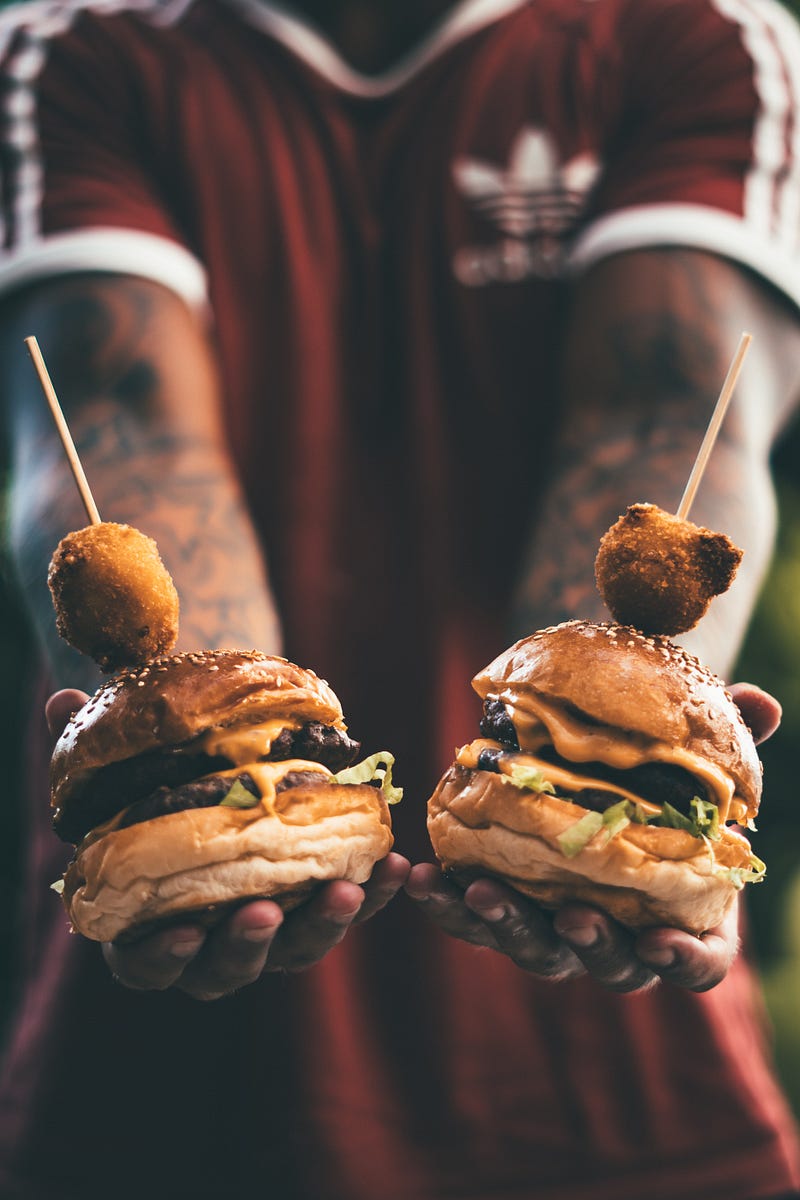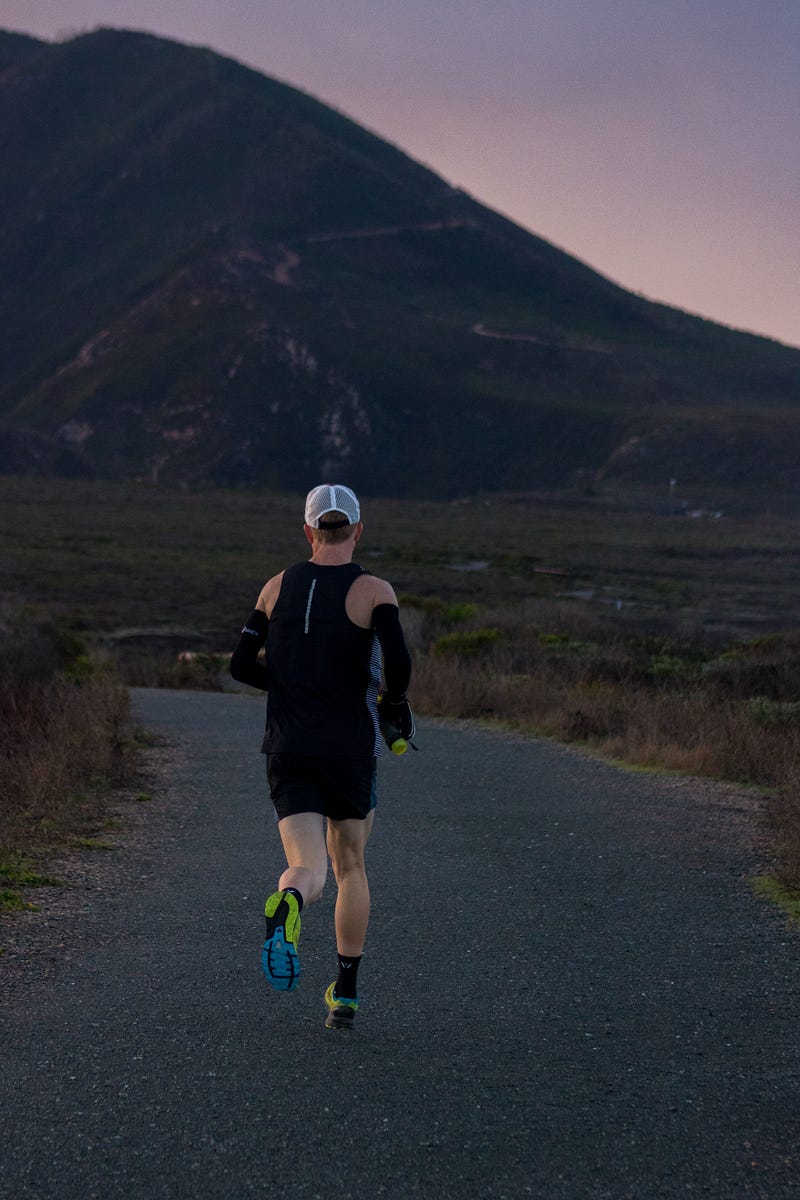
“What program were you on?”
“What pills did you take?”
“Which diet were you on?”
“Were you in Weight Watchers? Jenny Craig?”
Um, NO. None of the above.
In 1988, the year after I dumped 80+ pounds, people peppered me with these kinds of questions. There hadda be a secret. There just had to be a system. There just HAD to be a pill. There just HAD to be an easy answer.
NOPE.
As as society we are fixated about weight loss. We discuss it endlessly, sit on our couches and watch programs about fatties fighting the flab, we try endless ways to lessen the load.
Some sixty billion a year, actually. That’s what we invest in trying to trim the tush to a more reasonable size.
The fact that there is so much money spent is testament to the vast failure of such things to do the job. Which is of course why, when People Magazine features ex-fatties on its cover, folks flip through searching for the magic sauce.
There isn’t one.
This is the single fact of life that billions of people simply do not get. If there were a so-called special sauce then we’d all be slim and healthy. The hardest part of this to swallow (unlike donuts) is that your body is fundamentally different from mine, just as it is for the other 7.442 billion of us (as of 2016). Each of us is tasked with the responsibility of finding what works for body we were born with, what will make it fit, healthy and happy. That, frankly, is a lifetime, ever-changing journey, because each decade and each shift in our lives tends to cause us to have to adjust.

Add to this the dual messages of fast food in our faces, photos of gorgeous cakes and cookies on all the household mags, photos of uber slim models gorming Doritos (if they do at all, they likely head to the bathroom to vomit them up after the commercial), slim people chugging beer and slamming down pizza. Not in the real world they don’t. Or if they do and are still slim, you don’t want to look at their innards.
However, there are some hard and fast rules that generally work well, and I can offer some key tips for what has kept my butt tiny for half my life. As of this summer, it’s been precisely thirty years since I dumped all that weight. That is what makes me different from most. It’s not losing it. Contrary to popular opinion, that’s the easiest part of it. If you don’t believe this, please just look at the stats: some 80–95% of us regain the weight we lost and then some. Losing is easy. Maintenance is hard damned work.

While lots and lots of folks watch and are inspired by America’s Biggest Loser, here’s the other side of the story: the fast slide back to fat: https://people.com/bodies/biggest-loser-creator-new-show-former-contestants-regained-weight/. The simple, awful truth is that once we’ve been obese, and I have, the body wants that fat back. Once we’ve lost it, it’s ever so much harder to keep it off. Not only that, as we age, we have slower metabolisms. There is no easy street. EVER.
However this is what we see, and we don’t bother to do the research years later: https://www.shape.com/weight-loss/success-stories/and-after-pictures-biggest-loser-season-11. The truth is that it’s all patently bullshit. Every time I see another People cover about someone who lost 100 lbs, my response is talk to her in thirty years. Let’s see if it’s sustainable. Frankly any damned fool can dump 200 lbs. Very few damned fools can say they have kept it off decade after decade. And that is indeed the real test.

I am one of the latter damned fools. And just like you and everyone else on this planet I LOVE MY SWEETS. I love gooey pizza slices and greasy french fries and sloppy Whoppers. I love dense fudge brownies and Mexican wedding cookies and Krispy Kreme donuts. I LOVE THEM. But I don’t eat them. That difference is how I am 36–25–34.5 at the age of 65, and it had nothing whatsoever to do with my genes. My genes dictated 54" inch hips. I had them. I was the doublewide doing jogging duty on the sidewalk. Thirty years ago. Something had to change.
The weekend I began my change of life decision I had an epiphany. It was as simple as that. I went from sincerely wanting to get healthy to deciding that I was done with my excuses, and I threw my heart and soul into it. It was a one-way journey.

I was living in Melbourne, Australia at the time. A friendly triathlete lived down the street and used to bang on my door to get me to run with him. Look, I put the cracks in the sidewalks. I ducked into a back room every time he showed up. Then one day I met him at the door and we ran eight miles. Three had been my longest up to that point. The next day he offered to teach me how to ride my twelve-speed bike which sat unused on my porch.
That, and a wholesale shift of what I ate, were what did it. I fell in love with cycling (after I recovered from immensely sore medialis muscles from our first 24-mile foray), and rode up to to 30 miles or more every single day after that. I threw out all the bread, donuts, sweets, chocolate, candies. I shifted to fruits and veggies and a little meat. The pounds peeled slowly off. Key word: slowly.

One year and thousands of cycling miles later I weighed very close to what I weigh today at 65: 120. I have on occasion put on ten pounds if I am recovering from an injury and can’t do aerobic work but otherwise, my weight has stayed steady. I’m a size two in the butt, a six in the shoulders. Mostly muscle. Wanna know the secrets?
Okay, here they are:
- Stop talking about “wanna.” You do or don’t do. Decide. You can waste decades talking about how “sincere” you are. I sure did. You body doesn’t care about sincerity. It responds to DO.
- Find what you love. Makes no difference whatsoever: walk, yoga, run, cycle, swim, aerobics, weights, any combination of same. It doesn’t matter. Start slow. Start small. You will be sore. Be patient.
- You are what you eat. Fully 85% of what you look like is what you shovel down your gullet. However your metabolism is unique to you and ONLY you. You are the only one who can experiment, watch, wait, see and make changes based on feedback from your wonderfully unique physical machine. Begin by talking to a certified nutritionist. Find out if you might have food allergies. Do the homework. I found out that bread and I did NOT like each other. I love the taste-but a few slices, or cake or cookies or other sources of gluten, and it was game on for weight on. I don’t have celiac but it’s clear, today’s sugar-filled bread isn’t for me. Your body may be vastly different. Dietary guidelines are just that. One of the best diets EVER is the Mediterranean. You have to eat fats,and olive oil is among the best. However any extreme isn’t sustainable. Fads do harm. This is a change for life. Forever.
- If you need it, find support. Friends, a spouse, whatever you need. Having an accountability partner helps most of us. That’s particularly true if you live with someone who insists on bringing home a dozen Dunkin’ cream filled. My BF, who moved in last May, is an athlete, but he pounds down the sugar. It is extremely challenging for me to have cake, cookies, chocolates and sweets in the house that are winking at me from inside the pantry all day long. However- and this is key- a tiny taste once in a while isn’t a major crime. In fact, giving ourselves permission for a teaspoon of icing can go a very long way towards preventing inhaling the whole cake.
- Set yourself up for success. I never ever leave the house without food supplies. I have smoked almonds in the car at all times. This makes sure that the moment I start feeling hungry I’ve got a good snackable handy and I won’t whip my car into the next fast food lot.I take small containers of sliced pineapple, a banana, almond butter packets, lots and lots and lots of water. Why? Because many if not most of us respond to thirst signals by eating. It’s a complete misread of the body’s signals. Then if we slam a Coke or a juice drink, that’s 200 or so calories of wholly unnecessary crap sugar. That also goes for sports drinks. Look, let’s be clear- most of us don’t work out hard enough to need sugary sports drinks. Don’t fool yourself. Drink filtered water. It does the job. Period. Here are some solid guidelines: https://www.seattletimes.com/life/wellness/hunger-vs-thirst-are-you-eating-when-you-should-be-drinking/
- Be brutal about packaging. Stay out of the middle aisles of all grocery stores where the sugar lies hidden in all the packaging. That’s where folks make their money. On the outskirts are the fresh foods, good dairy options and better choices. We should not be eating more than 50 grams of sugar a day. ONE can of Mountain Dew has 77 grams of sugar. Juices are NOT a better choice: https://www.livestrong.com/article/450038-juices-with-the-highest-sugar-content/Get my drift? This is how we get diabetes. If you want some guidelines on the various types of sugar and how they affect you as well as some basic guidelines (which you need to adapt to your own unique needs) see https://www.healthline.com/nutrition/how-much-sugar-per-day#section7.
- Like yogurt? Check the label. LOTS of sugar. Here’s an alternative: buy plain yogurt. Chop up or add frozen strawberries or cherries (or whatever) that don’t contain added sugar. Sweeten with Stevia. Just as good or better tasting but with a fraction of the added sugar. And by the way, dump the sugar bowl and never buy that toxic shit again. Ever. I haven’t had a bag of sugar in my house for years. I use Stevia, and when I travel, I pack a big fat handful of them. It’s hard to find in Third World countries, where American products are widely available, and that means sugar, sugar, sugar. If you have any doubts about why sugar is the enemy (and NOT fats) please read The Case Against Sugar by Gary Taubes.
- Do your research. By this I mean read. Not only should you read about nutrition, you should test it against what your body tells you. All any nutritionist has is guidelines. You may have diabetes, illnesses, you may have cancer, you may be old, young, infirm. No matter what you are, those conditions determine what you need nutritionally. That is your job to discover, and it can be a long, wondrous, deeply-rewarding journey when we let go of whining that we can’t gorm two gallons of Ben and Jerry’s Chunky Monkey every night and still be svelte. GET OVER YOURSELF. This is your life, and your quality of life we’re talking about. It’s not just about weight loss, as the world is full of very sick thin people. This is about being well, being happy, and being able to live a long, fruitful, full life.
- Develop a sense of humor. This is going to be hugely helpful for those days you backslide. When the scale shrieks insults at you. When you sneak downstairs for a midnight snack. When your SO brings home a massive gooey pizza. LOOK, DAMMIT, WE’RE HUMAN. So kindly, give yourself permission to fail once in a while. I killed off plenty of bags of Oreos on my journey to where I am now. However I didn’t let those days derail me from my ultimate journey. Permission to have the occasional faceplant keeps me sane, and allows me to regroup if I wipe out an entire bag of Ghirardelli’s milk chocolate caramels in my BF’s pantry.
- Finally, your body isn’t necessarily meant to be slim to be fit. What you’re after is fit for YOUR body type. If you are an ectomorph, mesomorph or endomorph or any combination of same, don’t beat yourself up if you don’t end up looking like one of those airbrushed lies in a slick magazine. Here’s a good way to think about training for body type: http://www.coachmag.co.uk/lifestyle/4511/ectomorph-endomorph-or-mesomorph-what-is-your-body-type. Fit is just fit. What that means for you is unique to YOU and you alone. Keep in mind that the body needs fat, and that fat is just as important an organ as your liver or lungs. Yep. Not enough of it and we can die, or we can’t reproduce. Fat is not the enemy. Gross amounts of it aren’t good for us, but not having any at all is a killer.

This photo is of the Austrian bodybuilder Andreas Münzer. This is what a body looks like with zero body fat. He died at 31, the result of gross overuse of steroids and toxic substances. The body cannot live without fat.
For a much better understanding of what fat is and its role in the body, as well as a great deal of good advice about how to deal with the challenges of having been big and now the fat wants to load back on (my hand is up), please see The Secret Life of Fat by Dr. Sylvia Tara.
Your battle likely has less to do with fat than it does simply understanding what it takes to get fit. Your fat content will take care of itself quite naturally when you stop obsessing about it, learn to eat well for your body, move regularly, and let your body take care of it self through love and maintenance.
We only have one body. To the best of our knowledge we only have this life- at least until further notice. Rather than be worried about looking like a movie star, let’s be fair. Let’s find out what the best we can be looks like for us. A healthy journey doesn’t have an end point- at least until it’s time for us to discover what’s next. Til then, here’s to your health!
Comments powered by Talkyard.